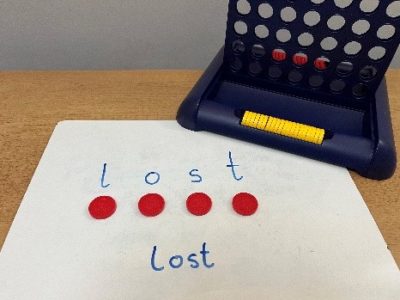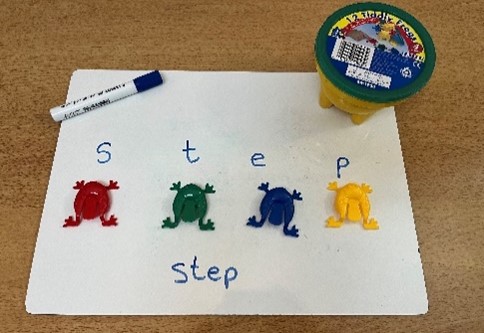Systematic Phonics programs now talk of ‘consonant blends’ or ‘adjacent consonants’, but what are they? Why is it that the letters ‘bl’ in the word ‘black’ are adjacent consonants while ‘ck’ are not? Speech and language therapist, Hema Desai explains the difference and suggests fun, multisensory activities to embed learning.
As a speech and language therapist and a specialist teacher, I have come across many young children who have ongoing difficulties with consonant blends; initially in their speech production and then in their spelling.
A consonant blend is when you have two consonants adjacent to each other such as ‘sp,’ ‘st,’ ‘pl,’ fl,’ ‘tr’ in words such as ‘spot,’ ‘stop,’ ‘plate,’ ‘flag,’ and ‘truck’. You may also have three consonants adjacent to each other such as ‘str’ in ‘string’ and ‘lamps.’
Many young children will simplify these blends when they begin to talk. They might say ‘top’ instead of ‘stop,’ ‘boo’ instead of ‘blue,’ or ‘pider’ instead of ‘spider.’ This phonological process of ‘cluster reduction’ generally resolves at approximately 4 years of age. In some instances, these difficulties will persist and the child might benefit from support from a speech and language therapist.
Difficulties with blends are also evident in children’s spelling, particularly for those that also had difficulty using blends accurately in their speech. Once children are comfortable with segmenting and blending simple CVC (consonant vowel consonant) words, the next step is to move onto word shapes with a range of consonant blends:
- VCC – and
- CVCC – must
- CCVC – stop
- CCVCC – stamp
- CVCCC- lamps (triple blend)
- CCCVC – strap
It is important that children learn about blends as individual sounds that are next to each other rather than as one single sound. For example, the word ‘spot’ is made with 4 individual sounds s-p-o-t or the word ‘train’ is made with 4 individual sounds (t-r-ai-n). We also need to recognize the difference between consonant blends and consonant digraphs such as ‘ch,’ ‘sh,’ and ‘th’ which are one sound (with two letters).
Multisensory activities to teach blends
Blending Activities
Post-it notes – write the individual sounds on separate post-it notes. Say each sound individually and then bring the post-it notes closer together and blend the sounds together. Move your finger from left to right in one sweeping action to show how the sounds blend together while saying the whole word.
Lego or Blocks – write individual letters on Lego or blocks. Choose the letters you need to build a word such as ‘milk.’ Ask your child to say each sound individually as you place the blocks next to each other. Then blend the sounds together by moving your finger from left to right in one sweeping action to show how the sounds blend together while saying the whole word.
Segmenting Activities

Sound Buttons – ask your child to listen to a word and use a counter to represent each sound (say each sound as you put the counter down). They can then write the letters that represent each sound above the counters. I like using ‘tiddly frogs’ so that we can make them hop afterwards. You could also use colored counters and then play the four-in-a-row game once all the counters have been used.
Post-it notes – use these in a similar way as above. Ask your child to listen to the word and place post-it notes on the table to represent each sound. They can then write each sound on a post-it note.
It is important to start with simple structures first (e.g. VCC, CVCC) before moving onto more complex structures, such as CCCVC. It can take some students a lot of practice so keep the teaching fun and multisensory, creating lots of opportunities to master this invaluable skill for spelling.
#phonicsforsen #consonantblends #teachblending #systematicphonics
* * *
Hema Desai is the Director of Connect: Literacy, Speech and Language Services. She has had over 20 years of experience working as a Speech and Language Therapist and is also a qualified Specialist Teacher, trained in the Sounds-Write program. Hema is passionate about supporting students to develop their literacy skills.


